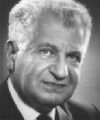Template:Selected anniversaries/June 29: Difference between revisions
No edit summary |
No edit summary |
||
| Line 7: | Line 7: | ||
||1807: Moritz Abraham Stern born ... mathematician. Stern was interested in primes that cannot be expressed as the sum of a prime and twice a square (now known as Stern primes). He is known for formulating Stern's diatomic series, which counts the number of ways to write a number as a sum of powers of two with no power used more than twice. Pic. | ||1807: Moritz Abraham Stern born ... mathematician. Stern was interested in primes that cannot be expressed as the sum of a prime and twice a square (now known as Stern primes). He is known for formulating Stern's diatomic series, which counts the number of ways to write a number as a sum of powers of two with no power used more than twice. Pic. | ||
||1818: Angelo Secchi born . | File:Angelo Secchi.jpg|link=Angelo Secchi (nonfiction)|1818: Astronomer, academic, and Jesuit [[Angelo Secchi (nonfiction)|Angelo Secchi]] born. Secchi will be a pioneer of astronomical spectroscopy, and one of the first scientists to state authoritatively that the Sun is a star. | ||
||1864: Ashutosh Mukherjee born ... educator, jurist, barrister and mathematician. He was the first student to be awarded a dual degree (MA in Mathematics and Physics) from Calcutta University. Perhaps the most emphatic figure of Indian education, he was a man of great personality, high self-respect, courage and towering administrative ability. The second Indian Vice-Chancellor of the University of Calcutta for four consecutive two-year terms (1906–1914) and a fifth two-year term (1921–23), Mukherjee was responsible for the foundation of the Bengal Technical Institute in 1906 and the College of Science of the Calcutta University in 1914. Mukherjee also played a vital role in the founding of the University College of Law popularly known as Hazra Law College. The Calcutta Mathematical Society was also founded by Mukherjee in 1908 and he served as the president of the Society from 1908 to 1923. He was also the president of the inaugural session of the Indian Science Congress in 1914. The Ashutosh College was also founded under his stewardship in 1916, when he was Vice-chancellor of University of Calcutta. He was often called "Banglar Bagh" ("Tiger of Bengal") for his high self-esteem, courage, academic integrity and a general intransigent attitude towards the British Government. https://en.wikipedia.org/wiki/Ashutosh_Mukherjee Pic. | ||1864: Ashutosh Mukherjee born ... educator, jurist, barrister and mathematician. He was the first student to be awarded a dual degree (MA in Mathematics and Physics) from Calcutta University. Perhaps the most emphatic figure of Indian education, he was a man of great personality, high self-respect, courage and towering administrative ability. The second Indian Vice-Chancellor of the University of Calcutta for four consecutive two-year terms (1906–1914) and a fifth two-year term (1921–23), Mukherjee was responsible for the foundation of the Bengal Technical Institute in 1906 and the College of Science of the Calcutta University in 1914. Mukherjee also played a vital role in the founding of the University College of Law popularly known as Hazra Law College. The Calcutta Mathematical Society was also founded by Mukherjee in 1908 and he served as the president of the Society from 1908 to 1923. He was also the president of the inaugural session of the Indian Science Congress in 1914. The Ashutosh College was also founded under his stewardship in 1916, when he was Vice-chancellor of University of Calcutta. He was often called "Banglar Bagh" ("Tiger of Bengal") for his high self-esteem, courage, academic integrity and a general intransigent attitude towards the British Government. https://en.wikipedia.org/wiki/Ashutosh_Mukherjee Pic. | ||
Revision as of 07:57, 29 June 2019
1818: Astronomer, academic, and Jesuit Angelo Secchi born. Secchi will be a pioneer of astronomical spectroscopy, and one of the first scientists to state authoritatively that the Sun is a star.
1868: Astronomer and journalist George Ellery Hale born. He will discover magnetic fields in sunspots, and be leader or key figure in the planning or construction of several world-leading telescopes.
1869: Niles Cartouchian and Egon Rhodomunde Confront Gnotilus wins Pulitzer Prize for Most Astonishing Illustration of the Year.
1895: Biologist Thomas Henry Huxley dies. He is known as "Darwin's Bulldog" for his advocacy of Charles Darwin's theory of evolution.
1896: Physicist Boris Yakovlevich Podolsky born. He will work with Albert Einstein and Nathan Rosen on entangled wave functions and the EPR paradox.
1963: Physicist and educator Nikolay Basov uses new theory of quantum electronics to detect and prevent crimes against mathematical constants.





